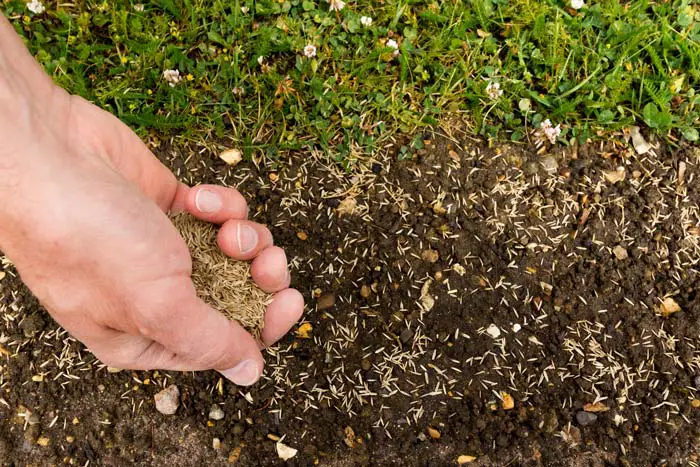Introduction: Unleashing the Beauty of Bermuda Grass
Are you dreaming of a stunning lawn that will make your neighbors green with envy? Bermuda grass is a popular choice for homeowners seeking a vibrant and resilient turf. To ensure optimal growth and establish a thriving lawn, it’s crucial to understand the best time to plant Bermuda grass.
In this comprehensive guide, we’ll dive into the nitty-gritty details of when to plant Bermuda grass, covering essential topics such as ideal planting windows, soil preparation, watering techniques, maintenance tips, and much more. By the end of this article, you’ll be equipped with all the knowledge you need to transform your yard into a verdant oasis.
When to Plant Bermuda Grass: Seizing the Perfect Moment
The timing of Bermuda grass planting plays a pivotal role in the success of your lawn. Choosing the right time ensures that the grass has optimal conditions to germinate, establish strong roots, and thrive throughout the seasons. So, when is the best time to plant Bermuda grass? Let’s explore the answer.
Spring Awakening: An Ideal Time to Plant Bermuda Grass
Spring, with its mild temperatures and abundant sunshine, offers an excellent opportunity to sow Bermuda grass seeds. As the soil temperature rises above 65°F (18°C), Bermuda grass enters a period of active growth, making it the perfect time to kickstart your lawn project.
Pro Tip: To determine the soil temperature, use a soil thermometer inserted at a depth of 2-4 inches (5-10 cm). Multiple readings in different areas of your yard will provide a more accurate average.
Summertime Delight: Another Viable Season for Planting Bermuda Grass
While spring is the preferred time for Bermuda grass planting, summer can also be a suitable alternative. If you missed the spring window or experienced unforeseen delays, fear not! With proper care and attention, you can still achieve remarkable results by planting Bermuda grass during the summer months.
Keep in mind that summer planting requires extra vigilance due to higher temperatures and potential water evaporation. Adequate watering and soil preparation become even more critical during this period.
Fall Back: Planting Bermuda Grass as the Temperature Drops
When the scorching summer heat subsides and fall sets in, you can seize the opportunity to plant Bermuda grass once again. Fall planting allows the grass to establish roots before winter dormancy, resulting in earlier spring green-up and enhanced overall resilience.
Pro Tip: The best time to plant Bermuda grass in the fall is six to eight weeks before the first expected frost. Check your local frost dates for precise planning.
Preparing the Ground for Success: Soil and Site Considerations
Achieving a lush Bermuda grass lawn requires proper soil preparation and site assessment. Let’s delve into the essential factors to consider before planting.
Assessing Sunlight Exposure: Shine a Light on Your Lawn
Bermuda grass thrives in full sunlight, making it essential to evaluate the sunlight exposure in your yard. Spend a day observing the areas where you intend to plant Bermuda grass and note the hours of direct sunlight they receive. Aim for a minimum of 8-10 hours of sunlight per day for optimal growth.
Testing Soil Quality: Digging Deeper
Healthy soil lays the foundation for a flourishing lawn. Conducting a soil test helps determine its pH and nutrient levels. You can easily obtain a soil testing kit from your local gardening center or consult with a professional soil testing service. Testing your soil will provide valuable insights into any necessary amendments and adjustments required for optimal Bermuda grass growth.
Soil pH: Striking the Right Balance
Bermuda grass thrives in soil with a pH level between 6 and 7. If your soil pH falls outside this range, you may need to make adjustments to create a more favorable environment for your grass. Adding lime to raise pH or sulfur to lower pH can help you achieve the optimal balance.
Pro Tip: Consult your soil test results for specific recommendations on adjusting pH levels in your soil.
Soil Drainage: A Path for Water to Follow
Good soil drainage is crucial for the health and vitality of Bermuda grass. Excess water can lead to root rot and other detrimental conditions. Conduct a simple percolation test by digging a hole about 1 foot deep and wide, filling it with water, and observing how quickly the water drains. Ideally, the water should drain within 24 hours for proper soil drainage.
Soil Amendments: Nourishing Your Lawn
Based on your soil test results, you may need to amend your soil to provide essential nutrients for your Bermuda grass. Adding organic matter, such as compost or well-rotted manure, can improve soil structure and fertility. Additionally, incorporating a balanced fertilizer specifically formulated for Bermuda grass can supply the necessary nutrients for healthy growth.
Watering Wisely: Quenching Bermuda Grass’s Thirst
Proper watering practices are vital for establishing and maintaining a lush Bermuda grass lawn. Let’s explore the best watering techniques to ensure your grass remains hydrated and vibrant.
Initial Watering: Setting the Stage for Success
After planting Bermuda grass seeds, it’s crucial to provide adequate moisture to promote germination. Lightly water the seeded area immediately after planting to dampen the soil. Continue watering daily or as needed to keep the soil consistently moist until the seeds germinate and establish roots.
Deep and Infrequent Watering: Training Your Grass’s Roots
Once your Bermuda grass begins to sprout and grow, it’s essential to train the roots to seek deeper moisture. Deep and infrequent watering encourages the roots to grow deeper into the soil, promoting a healthier and more drought-tolerant lawn.
Pro Tip: Watering deeply means providing enough water to saturate the soil to a depth of 6-8 inches. Use a rain gauge or empty tuna can to measure the amount of water applied.
Watering Frequency: Finding the Right Balance
The frequency of watering depends on various factors, including temperature, rainfall, and soil conditions. As a general guideline, water your Bermuda grass when the soil moisture levels reach around 50-75% of the recommended depth. This prevents overwatering, which can lead to shallow root growth and disease susceptibility.
Time of Day: Timing is Everything
Watering your Bermuda grass at the right time of day maximizes its absorption and reduces the risk of disease. The best time to water is early in the morning when temperatures are cooler and the wind is calm. This allows the grass to dry before evening, minimizing the chance of prolonged leaf wetness and fungal growth.
Drought Management: Preserving Your Lawn During Dry Spells
During periods of drought or water restrictions, maintaining the health of your Bermuda grass becomes challenging. However, implementing water-saving strategies can help preserve your lawn’s vitality. Consider practices such as aerating the soil, using mulch to retain moisture, and adjusting your mower height to provide shade for the soil surface.
Mowing Matters: Nurturing Bermuda Grass with Proper Cutting
Regular mowing is an essential aspect of Bermuda grass maintenance. Proper mowing techniques contribute to a dense, healthy, and attractive lawn. Let’s explore some key factors to consider when mowing your Bermuda grass.
Ideal Mowing Height: Finding the Sweet Spot
Bermuda grass thrives when maintained at an optimal height. The ideal mowing height for Bermuda grass ranges from 0.5 to 2 inches, depending on the specific variety. Keeping your grass at this height promotes vigorous growth, inhibits weed competition, and enhances the overall aesthetic appeal.
Pro Tip: Consult with your local cooperative extension or a lawn care professional to determine the recommended mowing height for the specific Bermuda grass variety you have.
Mowing Frequency: Striking a Balance
Avoid letting your Bermuda grass grow excessively long before mowing. Regular mowing encourages lateral growth and helps maintain a more uniform appearance. Aim to mow your lawn when it reaches approximately one-third higher than the desired height. This ensures that you’re not removing too much leaf surface, which can stress the grass.
Mower Blade Sharpness: Keeping It Razor-Sharp
A sharp mower blade is crucial for clean and precise cuts, minimizing stress on the grass. Dull blades can tear the grass, creating ragged edges that are prone to disease and discoloration. Regularly inspect and sharpen your mower blade to ensure optimal cutting performance.
Grass Clippings: To Bag or Not to Bag?
Contrary to popular belief, leaving grass clippings on your Bermuda lawn can actually benefit its health. Grass clippings decompose quickly and release valuable nutrients back into the soil. This process, known as “grasscycling,” helps nourish your lawn naturally and reduces the need for additional fertilizers.
Pro Tip: To facilitate grasscycling, use a mulching mower or attach a mulching kit to your regular mower. This chops the grass clippings into smaller pieces, aiding their decomposition.
Pest and Weed Control: Protecting Your Bermuda Grass Sanctuary
Maintaining a healthy Bermuda grass lawn involves effective pest and weed control strategies. Let’s explore some practical tips to keep unwanted invaders at bay.
Integrated Pest Management (IPM): A Holistic Approach
Integrated Pest Management (IPM) combines various pest control strategies to minimize the use of chemicals while effectively managing pests. This approach involves identifying pests accurately, monitoring their population, implementing cultural practices to reduce pest habitat, and resorting to chemical controls only when necessary.
Pro Tip: Consult your local cooperative extension for information on common Bermuda grass pests in your area and appropriate IPM techniques.
Weed Management: Winning the Battle Against Weeds
Weeds can quickly invade and choke out Bermuda grass if left unchecked. To prevent weed infestations, implement cultural practices such as maintaining proper mowing height, promoting dense grass growth, and practicing good soil fertility. Additionally, spot treat weeds promptly using herbicides specifically formulated for Bermuda grass lawns.
Pro Tip: Always follow the instructions on herbicide labels and take precautions to protect desirable plants and the environment.
Lawn Disease Prevention: Nurturing Healthy Turf
Bermuda grass is generally resilient against many diseases. However, certain conditions can make it susceptible to fungal infections. To prevent lawn diseases, avoid overwatering, ensure adequate soil drainage, and practice proper mowing techniques. In case of disease outbreak, promptly identify the issue and treat it with appropriate fungicides.
Pro Tip: Consult with a lawn care professional or your local cooperative extension for accurate disease identification and recommended treatment options.
FAQs: Unraveling Common Queries
Can I plant Bermuda grass in the winter?
While it’s possible to plant Bermuda grass in mild-winter regions, it’s generally not recommended. Bermuda grass prefers warm soil temperatures for optimal germination and establishment, which are typically not present during winter.
How long does it take for Bermuda grass seeds to germinate?
Bermuda grass seeds typically take around 7-21 days to germinate, depending on the soil temperature and moisture levels. Ensure proper watering and provide a warm environment for faster germination.
Can I plant Bermuda grass in shaded areas?
Bermuda grass thrives in full sunlight and struggles to grow in shaded areas. If your lawn has significant shade, consider alternative grass varieties that are more shade-tolerant.
How often should I fertilize my Bermuda grass?
Fertilization frequency depends on factors such as soil fertility, grass growth, and the specific fertilizer used. As a general guideline, Bermuda grass typically benefits from fertilization every 6-8 weeks during the active growing season.
Should I aerate my Bermuda grass lawn
Aerating your Bermuda grass lawn can help alleviate soil compaction and improve air and water movement in the soil. Aeration is especially beneficial if your lawn experiences heavy foot traffic or has compacted soil.
Can I overseed Bermuda grass?
Overseeding Bermuda grass is not typically necessary since it spreads and fills in bare spots naturally. However, if you desire a denser lawn or need to repair specific areas, overseeding with Bermuda grass or a compatible variety can be done during the active growing season.
Conclusion: Achieving Lawn Nirvana with Bermuda Grass
Congratulations! You’re now armed with all the knowledge needed to create a lush and vibrant Bermuda grass lawn. By understanding the ideal planting time, preparing the soil, implementing proper watering and mowing techniques, and staying vigilant against pests and weeds, you’re on your way to a picture-perfect lawn.
Remember, the key to successful Bermuda grass cultivation lies in consistency and attentive care. Nurture your lawn with love, and it will reward you with a velvety carpet of green that will make your neighbors envious. So go ahead, seize the moment, and transform your yard into a Bermuda grass paradise!








